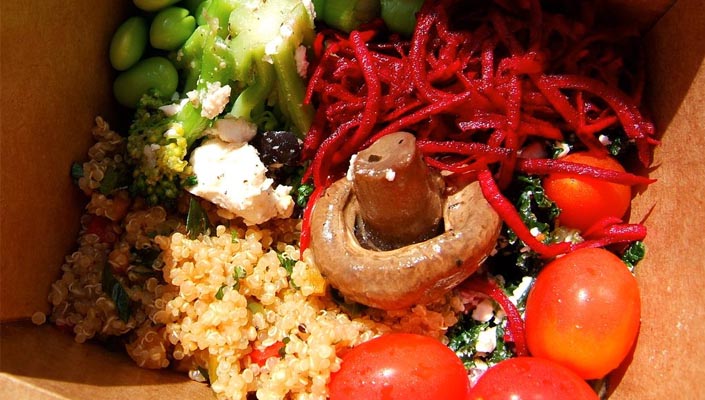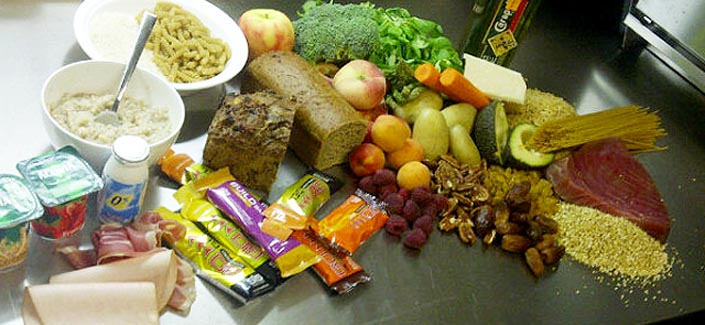
If you were asked to choose one area to improve with your cycling there's little chance you would choose nutrition. The most common reason cyclists don't correlate food with improved performance is because they don't actually alter their diet to suit physical activity. Most cyclists simply maintain their old diet and add cycling to the mix - the rest is a haphazard concoction of high sugar supplements, little hydration, and too much protein.
If you plan on cycling regularly it is worthwhile to alter your diet to be better suited to the extra activity. We can't possibly go into every aspect of nutrition in one short article, but here are some hints to head you in the right direction. This doesn't require you to change your ENTIRE diet; it is just a matter of fine tuning it around your riding.
THE SUPPLEMENT MARKET
Before we get started on what to eat, let's take a look at what is best avoided - unless in special circumstances.
Supplements in sport are heavily marketed as good sources of protein, amino acids, glucose, magnesium and a whole bunch of 'special ingredients' from ginseng through to guarana. But what you aren't told is that these supplements serve a specific purpose - to boost performance on top of an already solid diet. Far too many cyclists head out for a ride on an empty stomach and then assume that slamming two gels and a bottle of hydration is going to get them to the finish line.
Supplements are very useful during endurance sports, mainly for any stressful activity exceeding 1 hour in duration. However the focus of this article is getting your nutritional foundation in place first, before looking for that extra boost.
FOOD FOUNDATION
If you wanted to really maximise your performance, you'd have to change your entire diet. From Monday to Sunday you'd be eating like a future Olympian, but we know that just doesn't work in the real world. If you've ever worked a 5 day week, you'll know what we mean. Salmon salads and 45 grams of almond kernels for breakfast is pretty unrealistic for most people, especially when the kids are late for school, you've been working overtime, and you just happen to have a normal life. So to keep it real, we're looking at food to eat immediately before, during, and after your ride.
If you want to nail that 'Food Foundation' you could pop in to your local nutritionist, ditch the beer and wine, and start drinking almond milk. Alternatively, just replace an overload of bread and pasta with fresh vegies and natural food.
REALISTIC EATING
With such a hectic schedule, you'll only know if you're riding when you wake up in the morning, so let's start your eating plan from then - breakfast time.
For breakfast on the morning of a ride you'll want to have something substantial. Eating a decent quantity of food 1-2 hours before you ride, (as is regarded as best practise), is impractical if the guys are meeting you at 5:00 in the morning. If you can manage, try eating a good breakfast of whole grain cereals, porridge, fruit or the like - something with a high nutritional value is best, so ditch the sugary supermarket cereals in a box!
During the ride, it is best to have one piece of food for every hour you ride. Drinking is also important, so take constant small drinks every 10 minutes or so - whether it's water or electrolyte hydration drink. (Which is best relates to the distance and intensity of your ride).
After the ride, you should be looking at recovery, so again reach for something to drink. In this instance, a supplement drink powder is very handy to help replace lost salts through sweating.
It will be hard to eat a full lunch, so maybe hang back on the meal for 30-60 minutes, which is enough time for a shower and a recovery drink.
Lunch after a decent ride should consist of low GI foods such as whole grains, proteins and greens. You're not a future Olympian and probably aren't too dedicated to the cause, so to keep it real and aim for something like a boiled potato with coleslaw and mince for lunch - plenty of protein, carbs and low GI goodness. If you're away from home, why not buy a BLT on wholemeal bread? Yum yum.
MEALS ON WHEELS
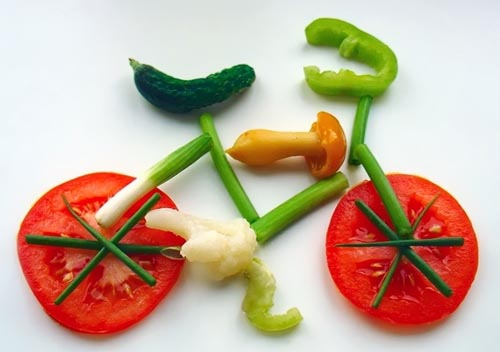
- BREAKFAST: Muesli with yoghurt and fruit.
This contains some protein, fruit sugars and low GI energy sources through high fibre eating. - RIDING: One piece of fruit and two muesli bars or similar. Maybe a banana and two bars. Three pieces of food equals three hours of being away from home - not just three hours of actually pedaling. Plan ahead!
Have two bottles on you, and choose between water and hydration substitute. Or just have one of each. - RECOVERY: Stick to low GI foods and at least one source of protein. As said before, a boiled potato, coleslaw and mince gives you most of what you need. Try to incorporate wholegrain bread, greens and protein into one meal, it's not too difficult.
As you can see, it's pretty easy to have a realistic approach to nutrition while you ride. The rest of your diet is up to you, and is greatly affected by circumstances. Try changing your riding food before you change your whole diet, just so you can nail one thing before you tackle another!
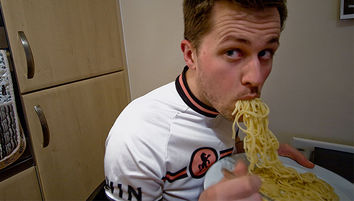
RELATED ARTICLE:
What NOT to eat when cycling
We all know sports and nutrition go hand in hand, and it's no different for cyclists on the open road. When you think of nutrition, you immediately think of what you should eat. But have you ever wondered... READ MORE
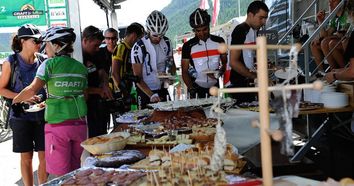
RELATED ARTICLE:
Cycling and food: When to eat and what to eat
Cycling and food. They go hand in hand, whether you like it or not. If you enjoy eating this is great news, but for most of us this concept presents a few challenges... READ MORE
